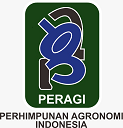Participatory Evaluation of Early Maturing Sorghum Technologies in Eastern Amhara Region of Ethiopia
Abstract
The low or non-adoption of improved agricultural technologies might be resulted from inadequate participation of farmers at all stages of the process of benefiting farmers. The current study was conducted in the representative sorghum producing areas of Wollo i.e. Raya kobo, Kalu and Dawa chefa with the objective of assessing farmers’ preference towards improved sorghum varieties and providing a menu of sorghum technologies. The study was conducted in 2019 cropping season having one year duration. Both inferential and descriptive statistics were used to analyze the collected data. Farmers’ perception was assessed using preference ranking and narration. Moreover, Agricultural events such as field days and experience sharing were prepared to capture farmers’ perception about the technologies. GenStat v.18th was used to analyze the data. Analysis of variance was employed to test the mean difference of yield among varieties. The result of ANOVA showed that improved sorghum varieties Dekeba and ESH1 gave the highest grain yield at respective sites. In kalu and Dawa chefa, farmers preferred Argiti whereas in Raya Kobo, Melkam was the variety preferred by the farmers. From the analysis of Spearman’s rank correlation, there was evidence on coincidence of farmers’ preference and the actual data. Therefore, based on the analysis of farmers’ preference and yield data, improved sorghum technologies Melkam and Argiti can be promoted in the respective districts of the study area.
Keywords
Full Text:
PDFReferences
Ademe Mihiretu, Asmiro Abeje, Lijalem Abebaw, Tsega Desalegn. (2018). Participatory Evaluation of Hybrid Sorghum Technologies: in Mid and Low Land Areas of Waghimra Zone, Eastern Amhara, and Ethiopia. Proceedings of the 9th Annual Regional Conference on Completed Activities of Socioeconomics and Agricultural Extension Activities, Bahir Dar, Ethiopia.
Bon-Gang, H. (2018). Performance and Improvement of Green Construction Projects: Management Strategies and Innovations. Butterworth-Heinemann.
Central Statistical Agency (CSA). (2014). Agricultural sample survey 2013/2014. Addis Ababa: Central Statistical Authority: unpublished
Central Statistical Agency. (2017). Agricultural Sample Survey 2017/2018: Area and Production of Major Crops, Central Statistical Agency, Federal Democratic Republic of Ethiopia, Addis Ababa, 2018: unpublished
Central Statistical Agency. (2018). Agricultural Sample Survey 2018/2019: Area and Production of Major Crops, Central Statistical Agency, Federal Democratic Republic of Ethiopia, Addis Ababa, 2019 : unpublished
Dawa chefa district office of Agriculture. (2019). Basic information about Dawa chefa district: unpublished
Goedhart, P.W. (2016). Procedure VSEARCH. In: Biometric GenStat Procedure Library Manual 18th Edition. Biometrics report 27.01.16, Biometrics, Wageningen.
Kalu district office of Agriculture. (2019). Basic information on Kalu district: unpublished
Muliarta, I N.; Purba, J.H. 2020. Potential of Loss of Organic Fertilizer in Lowland Rice Farming in Klungkung District, Bali. Agro Bali: Agricultural Journal, Vol. 3 No. 2: 179-185, December 2020. DOI: 10.37637/ab.v3i2.567
Pilar, G., Ashby, J. A., & Gracia, T. (1993). Farmer evaluations of technology: preference ranking. Instructional unit no. 2.
Prasad, P. V., & Staggenborg, S. A. (2009). Growth and production of sorghum and millets. Soils, plant growth and crop production, 2.
Purba, J.H.; Wahyuni, P.S.; Zulkarnaen; Sasmita N.; Yuniti, I G.A.D.; Pandawani, N.P. 2020. Growth and yield response of shallot (Allium ascalonicum L. var. Tuktuk) from different source materials applied with liquid biofertilizers. Nusantara Bioscience Vol. 12(2): 127-133. DOI: 10.13057/nusbiosci/n120207.
Puskur R., Sindu Workneh and Hoekstra D. 2008. Concepts and practices in agricultural extension in developing countries: A source book. IFPRI (International Food Policy Research Institute), Washington, DC, USA, and ILRI (International Livestock Research Institute), Nairobi, Kenya. 275 pp.
Raya kobo district office of Agriculture. (2019). Basic information on Raya Kobo district: unpublished
Russell T. (1997). Pair wise ranking made easy. In: PLA notes No 28, Methodological complimentary. International Institute of Environmental and Development (IIED), London, pp. 25-27.



























